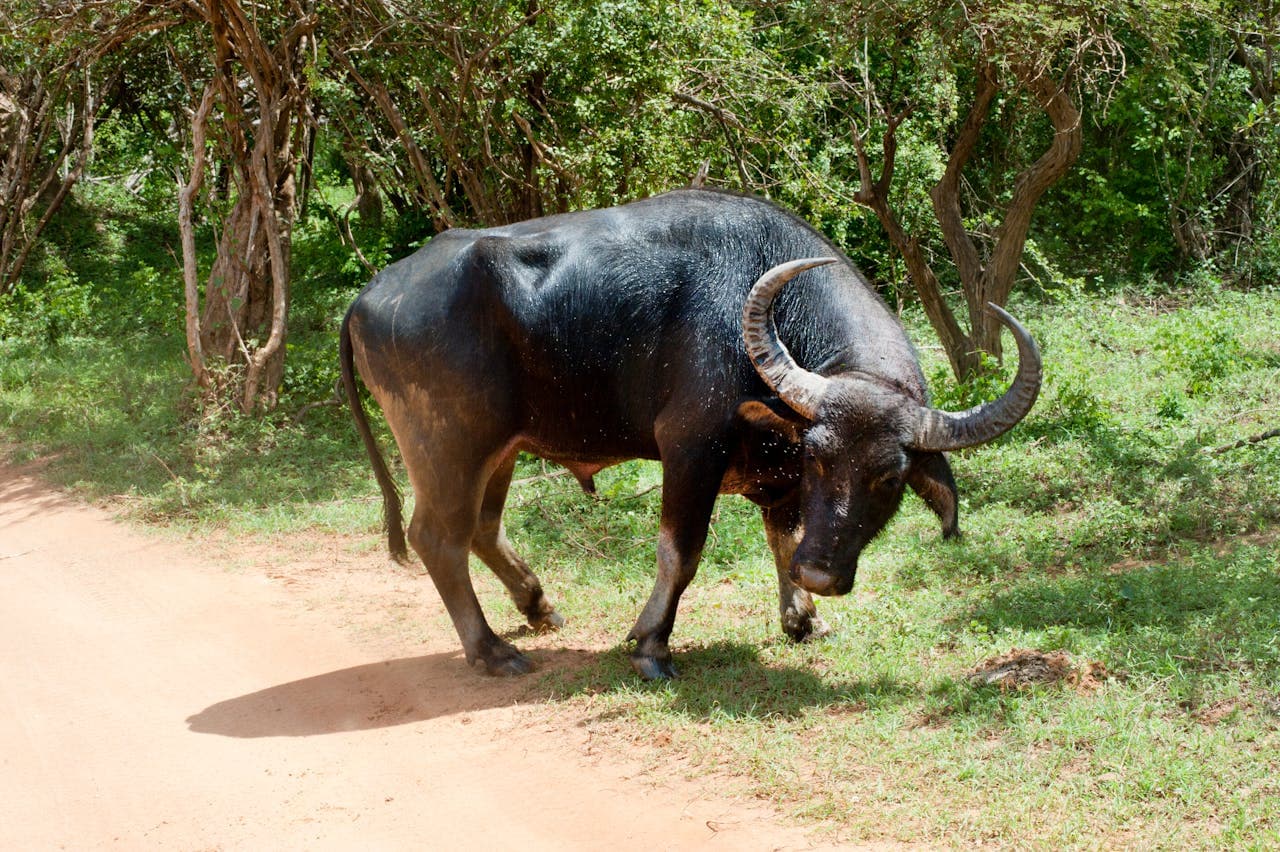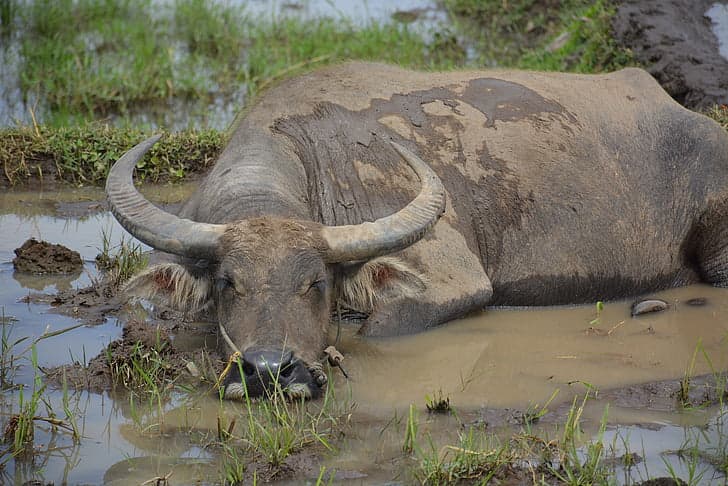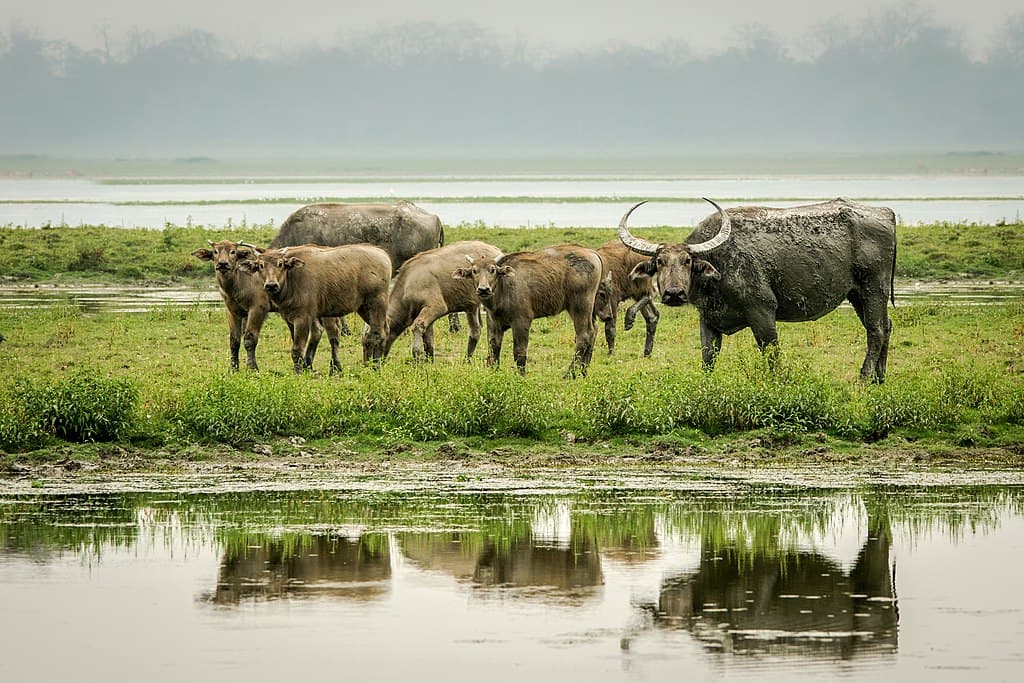A wild water buffalo or Asian buffalo (ក្របីព្រៃ) is a large buffalo species in Asia. Buffalos are one of the common animals that Southeast Asian kids know growing up. It is part of our culture to use them for farming and other purposes in rural areas. While knowing about the common buffalo, we don’t really know much about the wild water buffalo species. So let’s find out more about wild water buffalo below with me.
Appearance

Wild water buffalos are the ancestors of all domestic buffalo breeds, and that is why their appearances are so similar. Their skin is ash-gray or black with long coarse hair from their haunches to their head. A wild water buffalo is a large bovine that grows from 1.5 to 2 meters at shoulder length. It has a bulky and strong build, with a body mass of 700 to 1,200 kilograms. In fact, they are the second largest wild cattle species in the world.
One of the most distinctive characteristics of a wild water buffalo is its large curved horns. Their horns can grow up to 1.5 meters long, which is extremely astonishing to look at. A male’s horns are backward-curving and crescent-shaped with deep ridges on the surface, and they are about a third larger than the female’s. Another special feature is that their hooves are spread out which keeps them from sinking into the mud. These hooves also allow them to move about in swamps and wetlands easily as well.
Behavior

Wild water buffalos are social animals, and they are not territorial so they usually live in herds of a few to hundreds of individuals. This large herd is a great strategy to provide better protection for each other against predators. The herds are led by a dominant and older female, and they communicate by using low calls and grunts. These bovines can be active during the day or night, and they feed in the late afternoon or evening. Wild water buffalos spend a lot of their time submerging in muddy waters to keep cool and remove parasites.
Despite their size, wild water buffalo can run very face when they are in danger. At the same time, they are not afraid to use their horns to protect themselves. The females are very protective of their calves. In fact, female wild water buffalos will form protective lines in front of their young when there are predators.
Feeding & Habitats

As herbivores, they feed on aquatic plants when they are in the water. But normally, they leave the water to eat barks, fruits, grasses, herbs, leaves, shrubs, and trees. Besides these, wild water buffalos also feed on crops like jute, rice, and sugarcane which can cause damage to the fields.
Just like the name suggests, they like to be in places near water. Like to browse and graze in floodplain forests, low-lying waterlogged floodplain grasslands, swamp edges, and subtropical and tropical forests. Though originated in Asia, wild water buffalo have also been introduced to Africa, Australia, Europe, and North America.
Predators & Threats
As a massive bovine, the main predators of the wild water buffalos are big cats like lions and tigers. Crocodiles also attack them when opportunities arise if a young or careless individual is near their territory. Some sources also mentioned that Asian black bears have been known to kill these buffalos as well.
Back in the 1950s, wild water buffalos were distributed throughout mainland Southeast Asia. A number of them were in the open forests of eastern Cambodia, but things are not the same anymore. This buffalo species has been facing a massive decline in the past decades. According to WWF Cambodia, very few populations are in Mondulkiri province and possibly Ratanakiri province. The main threat to their lives is trophy hunting for their extraordinary horns, and that causes them to be endangered. Habitat loss and wetland degradation also play a part while interbreeding with domestic water buffalo also makes their number decline.
Related Post: Wild Cats In Cambodia
